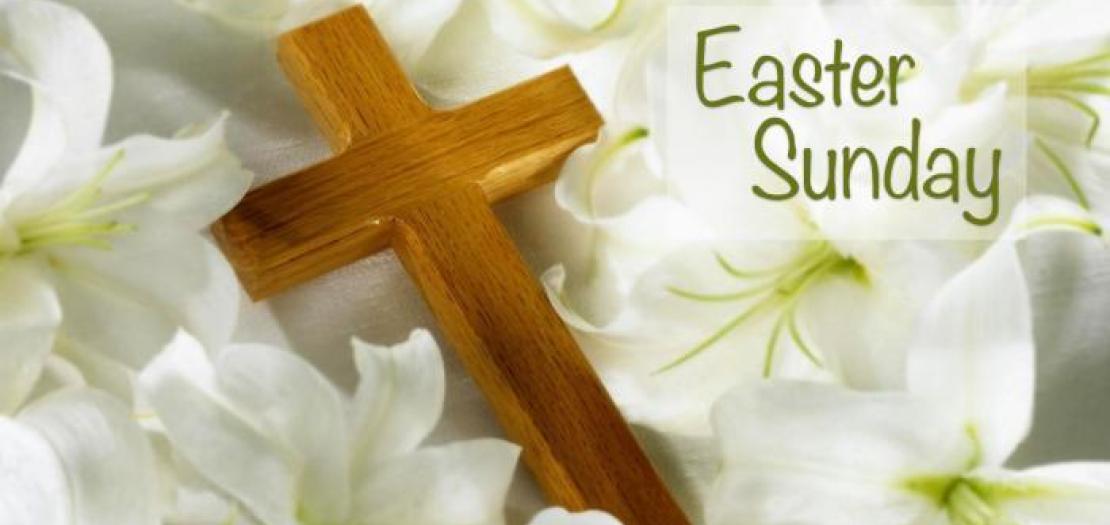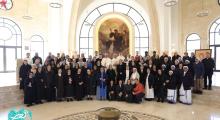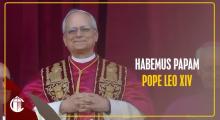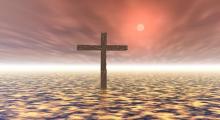Issued by the Catholic Center for Studies and Media - Jordan. Editor-in-chief Fr. Rif'at Bader - موقع أبونا abouna.org

Following is the text of the meditation by Latin Patriarch of Jerusalem His Beatitude Pierbattista Pizzaballa marking Easter Sunday (the Feast of the Resurrection), April 9, 2023:
On the first day after the Sabbath, in the early morning, Mary Magdalene came to the tomb to anoint the body of Jesus, but she sees that the stone which enclosed the tomb has been rolled away, and she understands that something has happened (Jn 20:1). And she thinks of the only thing that she can, that someone has stolen the Lord’s body.
She does not at once find the Risen Lord waiting for her. She and then Peter and John first have another experience, they are simply beginning to sense that something new has happened.
On Easter morning, the first thing that happens is that there is something new.
What everyone took for granted, what everyone was expecting, what was natural happened, in reality it gives way to something new.
The first great news of Easter is that something new, something different, can happen.
And so, the first step to take to enter the Easter day is to humbly accept the unheard possibility, of the new, of something that our mind cannot, alone, produce. In life we are often so resigned, and we’ve become accustomed to the fact that something new, something beautiful can never happen for us. But there is something new.
But what is this newness? We saw, on Holy Thursday, the journey of Jesus who, coming from the Father, was about to return to the Father: the hour had come. (John 13:1)
But then suddenly death came, and death gave the feeling that the journey was interrupted; it tried in every way also to make Jesus end His earthly journey. But it was not so.
In fact, Mary goes to the tomb expecting to find death, but does not find it. The sepulcher is empty, the house of death has been devastated: someone was stronger (cf. Lk 11:22) than death.
Mary Magdalene goes to the tomb to bring her sad tribute to death. She goes there with perfumes, because the only thing she can do is to cover the pungent smell of death with the perfume of her love. It’s the only thing that remains to be done.
We are convinced that we will always find death around the corner, that death is there awaiting us, laying an ambush for us, to tell us that everything we believe in does not really exist. It is there to tell us that all our best hope is destined to end up locked in a tomb with death forever.
Death thus becomes a lady, a mistress of our lives, and we end up living for her: we give her the power to keep us under control, we live with the fixed idea of being on the way to her, like Mary Magdalene on her way towards the tomb. But death, that morning, is not there waiting for the women. Mary still does not find the Risen One; she does not even find death.
Then, the second great and beautiful news of Easter is that there is no more death. And it really is very good news, truly capable of changing a life. As it changes Peter and John’s life. They too, informed by Mary, go to the tomb. (John 20:3)
But they do one more thing: they enter. (John 20:6-8)
The gospel focuses on this, their entering; one arrives first, the other comes after but enters first, and then the one also enters…
Perhaps the gospel simply wants to underline the importance of this entering, and that each one, by entering, has his time. But sooner or later they both enter. They enter the place of death, the realm of death, and they see that it is empty: Jesus came out of it. They see that all symbols of death, the tools that death used to keep men tied to itself, are there, on the ground or folded up in a place apart (Jn 20: 5-7); and they are not needed any more, no longer are they tied to anyone. Death no longer envelops life, it is emptied of its power.
The Gospel says that the other disciple after seeing this, “believed” (John 20:8): believing is therefore a way of seeing deeply, of recognizing that the absence of the body does not speak of a theft, but of a new life that’s happened; seeing a void, and believing that this void is in reality a fullness.
And that’s what today, each of us is called to do: enter into places of death, and stand there, on the edge of the tomb, to see and to believe that despite death continuing to be scary, it really has no more power.
We people are called to live there, on the threshold of the tomb, as if to keep open a frontier, a passage, to live continuously this movement from death to life.
To see that the signs of death are still present in us and outside us, but in believing this great and absolute news, a “stronger” came into the world to defeat the enemy that man alone could never have been able to cope with.
+Pierbattista







